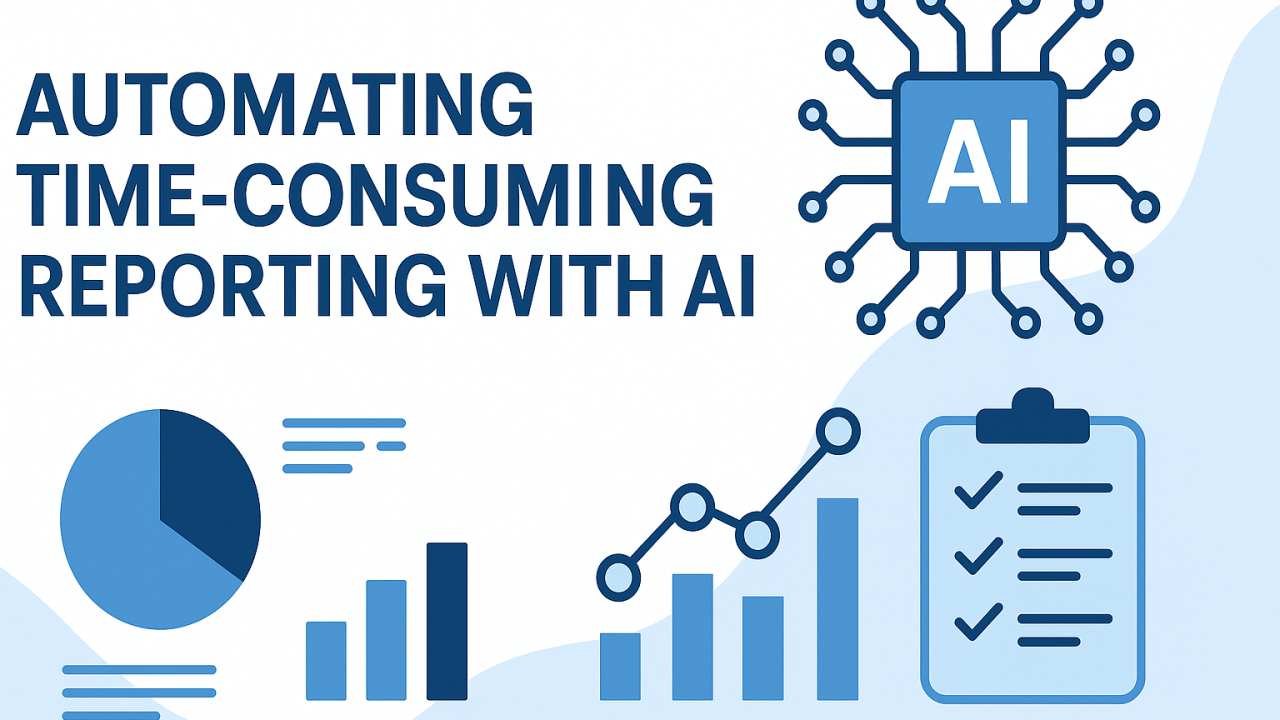3 AI Tools SMBs Should Use to Automate Time-Consuming Reporting

Say goodbye to hours of spreadsheets and status reports. These AI tools are changing how small and midsize businesses handle reporting—saving time, reducing errors, and driving smarter decisions.
For many small and midsize business (SMB) leaders, reporting is a time sink. Sales updates, operations dashboards, marketing performance summaries—these routine reports often involve manual data wrangling, last-minute updates, and long nights in spreadsheets.
But now, the rise of AI-powered automation is offering a smarter solution.
Modern AI tools now connect directly to your data sources, extract relevant information, and automatically generate clean, visual reports—often in real time.
No coding needed, no late-night Excel marathons.
Below, we break down the three AI tools that are helping SMBs eliminate reporting busywork and focus on growth.
1. Gumloop: Real-Time AI Agents for Your Reporting Workflows
Best for: Admin-heavy reporting processes, sales summaries, research-based updates
Gumloop is a no-code automation platform built for business teams, not developers. It uses persistent AI agents—powered by models like GPT-4 and Claude—to handle repetitive workflows and connect with internal tools.
Need weekly sales numbers pulled from your CRM, cleaned up, and pushed to a shared Notion page? Gumloop does that. It can even scrape dashboards, documents, and websites, then feed structured data into tools like Google Sheets.
Why it matters for SMBs:
- Cuts hours of manual reporting by automating data collection and formatting.
- Requires zero technical setup—just describe the workflow.
- Scales easily across admin, finance, and customer support tasks.
Bottom line: If you're still sending weekly reports by copying data between apps, Gumloop is your AI assistant.
2. Beam AI + Google Data Studio: From Messy Files to Clean Dashboards
Best for: SMBs that deal with emails, PDFs, and CSVs
Beam AI brings AI data extraction to the next level by turning unstructured information into clean dashboards. Integrated with Google Data Studio, Beam’s AI agents pull data from sources like emails, attachments, or legacy exports, clean it, and feed it directly into live reports.
Instead of sorting through dozens of documents, your dashboards update in real time—with no human involvement.
Why it matters for SMBs:
- Saves time by turning unstructured data (like supplier PDFs or support logs) into structured metrics.
- Keeps leadership dashboards current without manual updates.
- Supports custom workflows across finance, HR, operations, and logistics.
Bottom line: If you're drowning in raw data files, Beam AI helps you turn chaos into insights—automatically.
3. Reporting Automation Platforms: The All-in-One Solution
Best for: SMBs looking to automate across the board
The new generation of reporting platforms now come with built-in AI features—like natural language queries, smart scheduling, and automated alerts. They connect with your apps (CRMs, ERPs, email platforms), aggregate the data, and deliver visual dashboards on a recurring schedule.
Think drag-and-drop interfaces, real-time updates, and PDF reports that send themselves every Monday morning.
Why it matters for SMBs:
- Automates recurring reports across teams without building custom solutions.
- Reduces human error in reporting with standardized templates and AI validation.
- Works well for teams without a dedicated data analyst.
Here are some standout platforms in 2025 that are leading this shift:
- Domo AI – Self-service analytics with intuitive dashboards, automated report scheduling, and smart alerts. Connects with dozens of enterprise data sources to deliver comprehensive insights.
- Whatagraph – Built for marketing teams, it offers customizable visual reports, no-code data cleaning, AI agents for natural language queries, and seamless integration with key marketing platforms.
- Sembly AI – Transcribes and analyzes meetings to auto-generate structured business reports. Integrates with Zoom and Teams for real-time meeting insights and action items.
- Odin AI HockeyStack – Specializes in marketing data analysis with text-to-report features and smart dashboards. Users can type requests in plain English and get instant summaries.
- Tableau – A longtime enterprise favorite, now enhanced with AI for natural language queries, auto-generated insights, and scheduled dashboard delivery.
Bottom line: For SMBs ready to ditch manual reporting entirely, these tools provide structure, visibility, and peace of mind—no technical team required.
These platforms represent the future of reporting: always-on, deeply integrated, and AI-enhanced to deliver exactly what business leaders need—when they need it.
The Real Payoff: Time Saved, Decisions Made
Here’s what SMB leaders gain by switching to AI-powered reporting:
✅ Less time on manual updates
✅ Fewer reporting errors
✅ Faster access to actionable data
In a competitive landscape, having real-time insight into your business isn’t optional—it’s a competitive advantage. And thanks to tools like Gumloop, Beam AI, and next-gen reporting platforms, you don’t need a data team to get it done.
Getting Started: A Simple 3-Step Plan
- Pick one report to automate — Look for recurring reports that involve multiple sources or repetitive formatting.
- Test one tool — Start with Gumloop if your reporting involves multiple apps or Beam AI for data-heavy documents.
- Scale as you go — Once you’ve automated one report, expand to others. Most tools offer free trials or pay-as-you-grow pricing.
Final Take
SMBs can’t afford to waste time on reporting—and in 2025, they don’t have to. AI-powered tools are now affordable, easy to set up, and built to fit into existing workflows. Whether you're tracking leads, monitoring inventory, or reporting financials, it’s time to let AI take the busywork off your plate.
Because in a small business, every hour counts.

